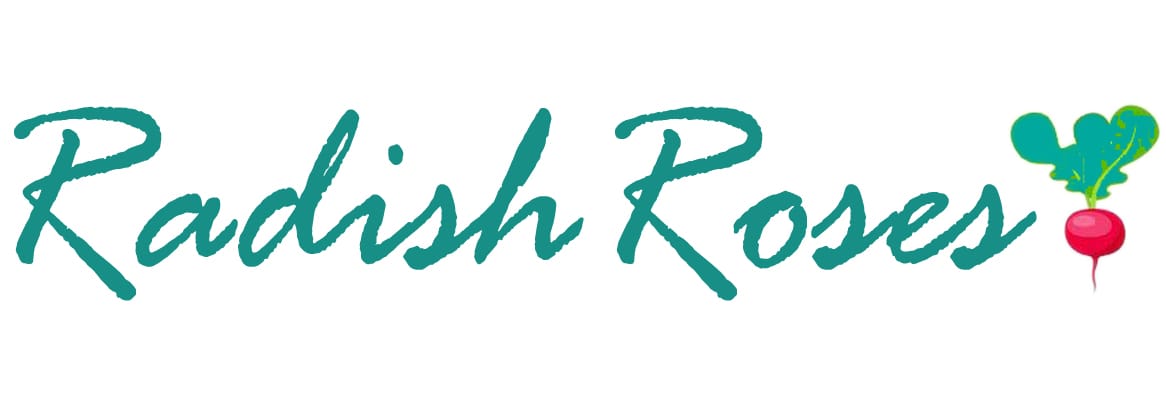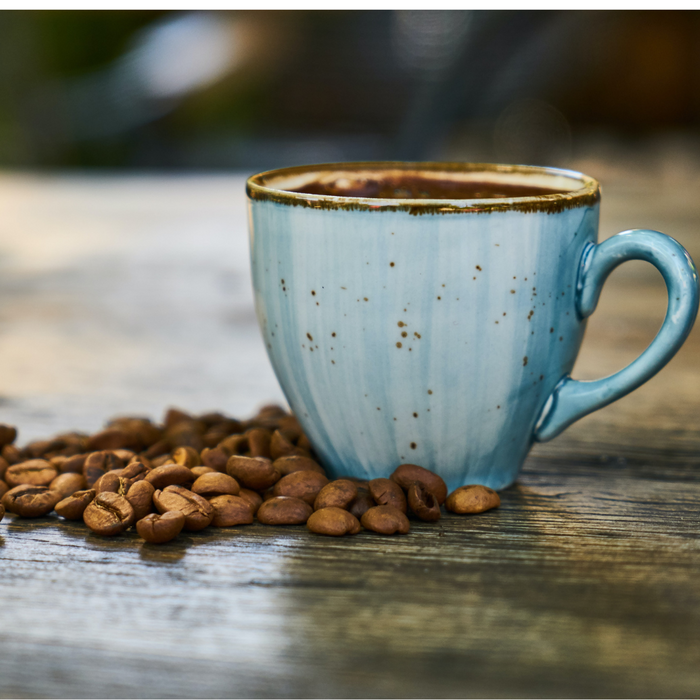Do you find yourself pondering the age-old question: espresso or coffee? With countless opinions and preferences, it can be challenging to discern the differences between these two caffeine-packed beverages. Fear not, for we are here to shed some light on the caffeine in espresso vs coffee debate, focusing on factors like flavor, preparation, and, most importantly, caffeine content. So buckle up and prepare for a caffeine-filled journey that will help you make an informed decision the next time you’re at your local coffee shop.
In this exploration, we will delve into the brewing processes, the impact of coffee beans and roasts, and the magic of espresso machines. We’ll also examine popular espresso drinks and their caffeine content, as well as provide tips for choosing the perfect caffeine fix tailored to your preferences and needs. By the end of this post, you’ll be well-equipped to navigate the world of coffee and espresso with confidence, understanding the caffeine in espresso vs coffee.
Key Takeaways
- Caffeine content of espresso and coffee does not differ significantly, but brewing process plays an important role.
- Coffee beans and roasts used in espresso have an impact on caffeine content, aroma & flavor. Arabica vs Robusta beans & light roast vs dark roast offer different levels.
- Tips for choosing the right caffeine fix: know your tolerance & experiment with different beans/roasts/brewing techniques to find perfect combination.
Caffeine Showdown: Espresso vs Drip Coffee
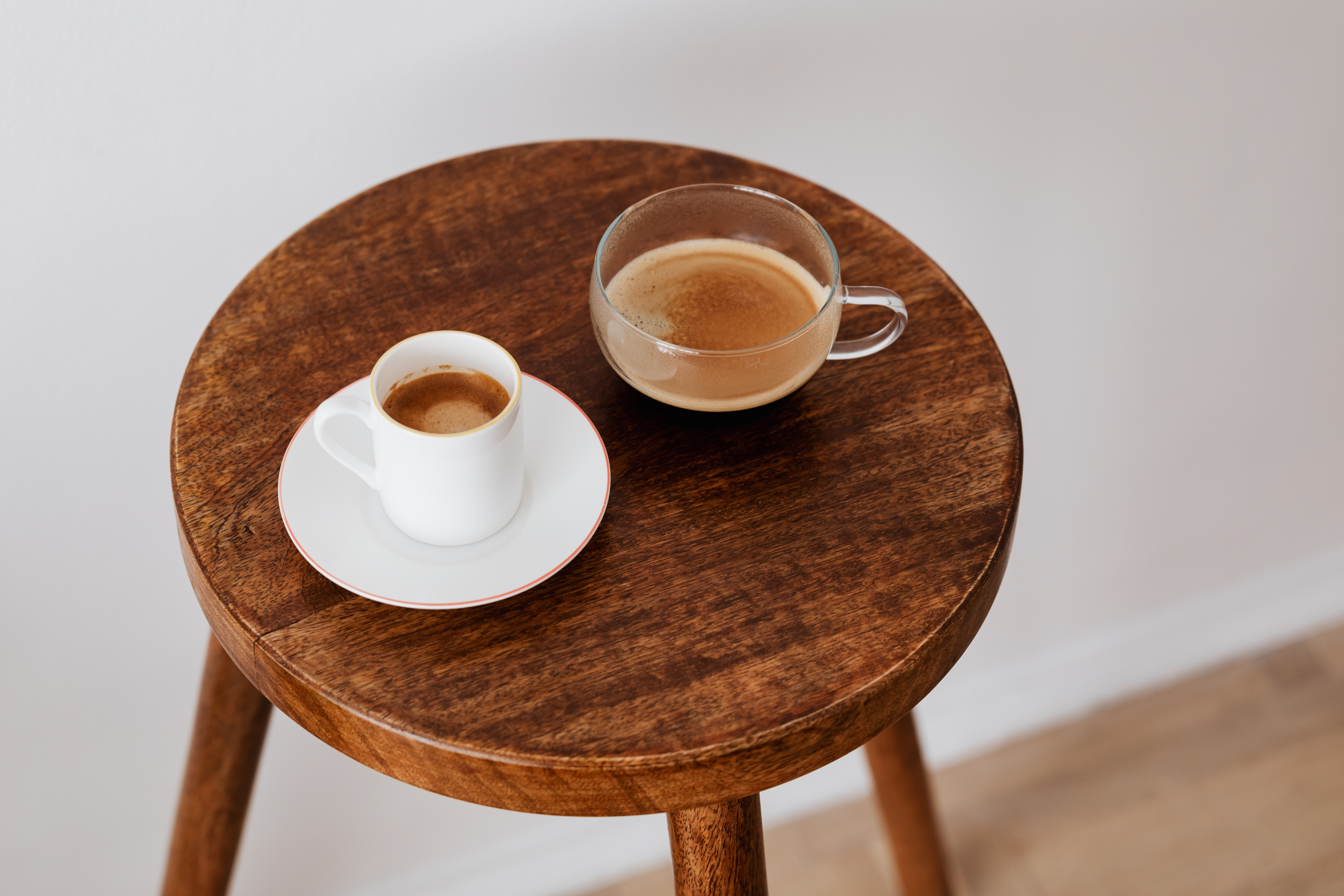
One of the most significant factors that differentiate espresso and coffee is their caffeine content. Many people believe that a shot of espresso contains more caffeine than a cup of brewed coffee. However, this assumption is not entirely accurate. In reality, the caffeine content of a shot of espresso and a cup of brewed coffee doesn’t vary significantly. An ounce of espresso contains approximately 64 mg of caffeine. On the other hand, an 8-ounce serving of drip coffee contains approximately 95 milligrams of caffeine at its minimum.
So, why does this misconception persist? The brewing process plays a significant role in determining the caffeine content of coffee and espresso. We should examine the brewing processes of both espresso and drip coffee to comprehend their influence on caffeine concentration.
Brewing Process
The procedure for brewing espresso, one of the many coffee brewing methods, involves:
- Forcing hot water through finely ground coffee beans at high pressure.
- This brewing method results in a shorter extraction time compared to drip coffee, which helps avoid the presence of bitter compounds.
- Baristas can even increase the caffeine content of an espresso shot by adding more coffee to the basket and applying greater pressure during extraction.
On the other hand, drip coffee uses an extended extraction period, allowing for a more comprehensive caffeine extraction. As a result, espresso has a higher caffeine concentration compared to filter coffee. However, when considering the standard serving sizes, one shot of espresso from your local coffee shop is equivalent to approximately a cup of drip coffee in terms of caffeine content.
After understanding how the brewing process influences caffeine levels, it’s time to investigate the role of coffee beans and roasts.
Serving Size Comparison
When comparing serving sizes:
- A conventional 8 oz. cup of coffee is typically brewed with approximately 11 grams of dry coffee.
- A double espresso shot is usually brewed with 14 grams of dry coffee.
- Coffee typically contains 95-165mg of caffeine per 8 fluid ounces.
- A single shot of espresso has about 65-80mg of caffeine.
- A double shot of espresso generally has around 130-160mg of caffeine, which is one-third more than a cup of coffee.
- The standard serving size of espresso is generally one ounce or 30 milliliters.
To sum up, when comparing espresso vs coffee, espresso might have a higher caffeine concentration per ounce, but it’s usually served in lesser amounts than drip coffee. Consequently, a single shot of espresso may contain less caffeine than a regular cup of drip coffee.
Having clarified the caffeine face-off between espresso and coffee, it’s time to delve into the influence of coffee beans and roasts on flavors and caffeine content.
The Role of Coffee Beans and Roasts

The coffee beans and roasts used in brewing espresso and coffee play an essential role in determining their caffeine content, aroma, and flavor. The variety of espresso beans employed, such as Arabica or Robusta, can have an effect on the caffeine content of espresso.
Furthermore, the roasting process can also impact caffeine levels, with darker roasts having slightly lower caffeine levels than lighter roasts.
We should examine the differences between Arabica and Robusta beans, and how light and dark roasts influence caffeine content.
Arabica vs Robusta
Arabica and Robusta are two distinct types of coffee beans, each with its unique flavor profile and caffeine content. Arabica beans are known for their sweet, mild flavor and low caffeine content, typically ranging between 1.2-1.5%. In contrast, Robusta beans are recognized for their strong, bitter flavor and high caffeine content, generally falling between 2.2-2.7%. This means that Robusta beans possess almost double the caffeine content in comparison to Arabica beans.
The choice between Arabica and Robusta beans can significantly impact the caffeine content of your coffee or espresso. If you prefer a stronger, more caffeine-rich beverage, Robusta beans might be the right choice for you. Conversely, if you enjoy a milder flavor with less caffeine, Arabica beans could be your go-to option.
Light Roast vs Dark Roast
The roasting process can influence the caffeine content, flavor, and aroma of coffee beans. Here are some key points to note.
- Lighter roasts generally have a higher caffeine content than darker roasts.
- Lighter roasts exhibit a milder flavor and less acidity.
- Darker roasts have a more intense flavor and are more acidic.
- Darker roasts contain slightly lower caffeine levels than lighter roasts.
Remember, your choice of roast can significantly affect your coffee or espresso’s flavor profile. For instance, a dark roast might result in a bold, robust flavor, while a light roast could produce a more delicate, nuanced taste. Experimenting with different roasts can help you find the perfect balance of flavor and caffeine content tailored to your preferences.
Espresso Machine Magic: Pressure and Extraction
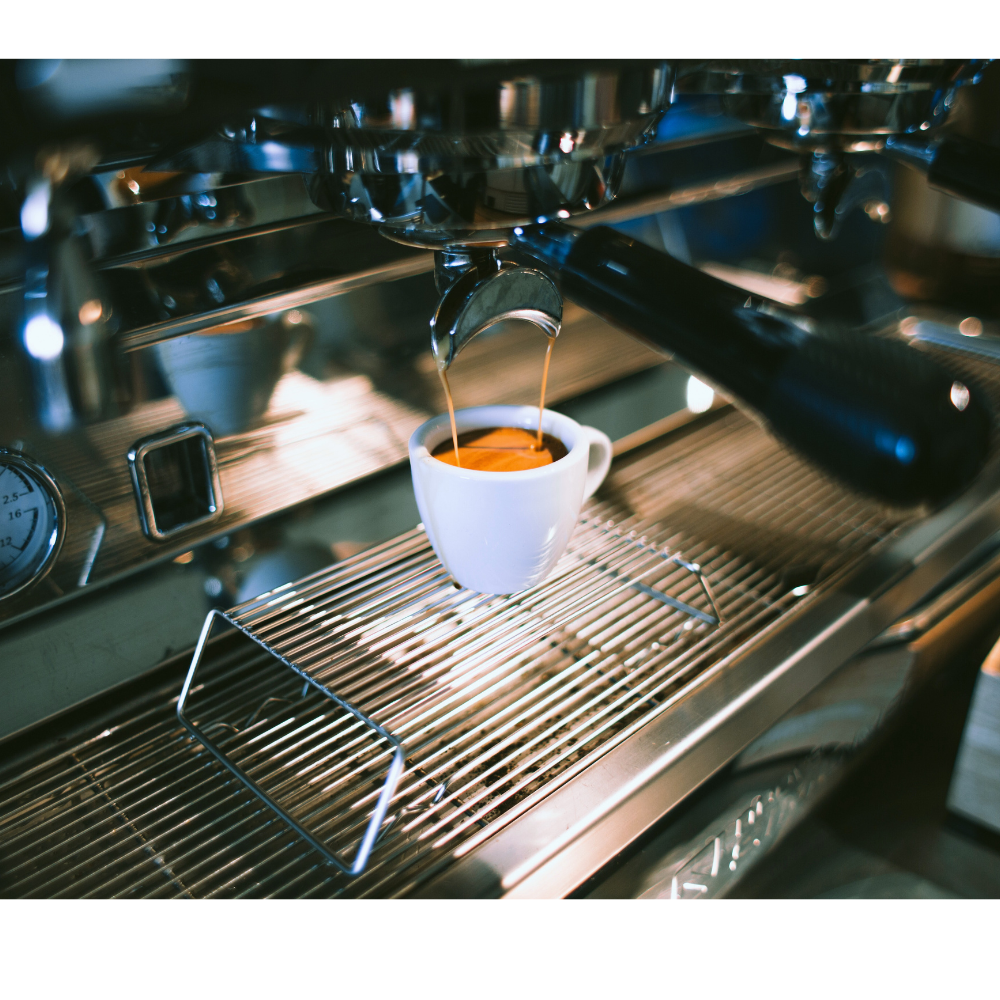
The role of espresso machines in creating the concentrated flavor and caffeine content of espresso shots cannot be understated. Espresso machines utilize high pressure to force hot water through tightly packed coffee grounds, extracting the coffee’s flavor and compounds. This high-pressure extraction not only produces a more concentrated and flavorful espresso shot, but also directly impacts the caffeine content of the final product.
Let’s investigate the role of high-pressure extraction and the impact of grind size and consistency in the realm of espresso.
High Pressure Extraction
High pressure extraction is integral in creating a quality shot of espresso. By applying high pressure to force hot water through the finely ground coffee beans, it facilitates the extraction of more flavor and aroma from the coffee. The high pressure also helps generate a thicker, more concentrated espresso shot, which is highly sought after by coffee enthusiasts.
However, perfecting the technique of high-pressure extraction presents its own challenges and necessitates pricier equipment. Despite these hurdles, the unique flavor and caffeine concentration achieved through high pressure extraction make it a vital element in crafting the perfect espresso shot.
Grind Size and Consistency
Grind size and consistency are of great importance for espresso extraction, as they impact the rate of extraction and the flavor of the espresso. The finer the grind size, the more surface area of the coffee beans is exposed to hot water, resulting in a faster extraction. Moreover, the more consistent the grind size, the more evenly the hot water will be able to extract the flavor from the coffee beans.
When grinding coffee beans for espresso extraction, it is essential to use a burr grinder, as this will produce a more uniform grind size. It is also imperative to adjust the grind size to the desired level, as this will influence the rate of extraction.
Lastly, regular cleaning of the grinder is vital to maintaining consistent grind size.
Popular Espresso Drinks and Their Caffeine Content
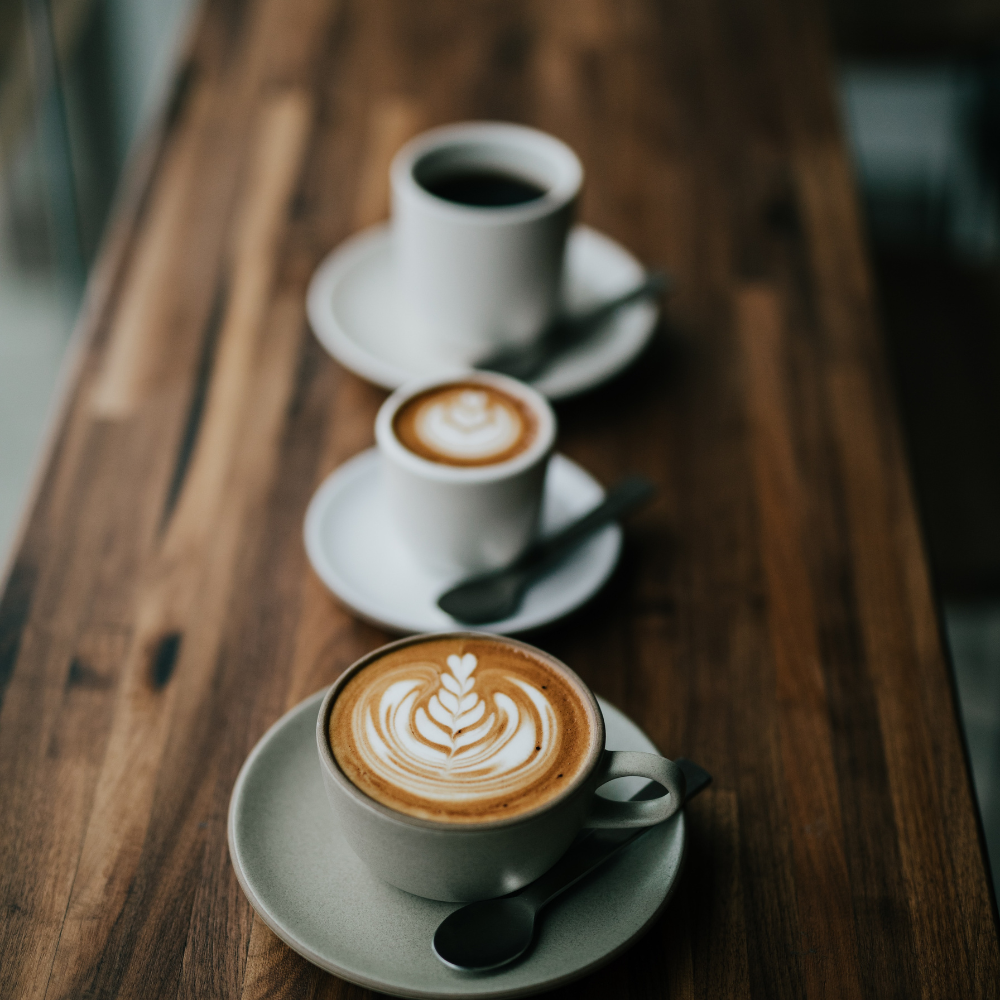
Understanding the differences between espresso and coffee is crucial, as is being aware of the caffeine content in popular espresso-based drinks. Espresso shots typically contain between 64-100 milligrams of caffeine per shot. Espresso-based drinks, such as lattes, cappuccinos, and macchiatos, typically contain between 64-100 milligrams of caffeine per shot as well.
Decaffeinated espresso-based drinks usually have between 3-12 milligrams of caffeine per shot. Let’s review some popular espresso drinks and their corresponding caffeine content.
Americano, Latte, and Cappuccino
Americano, Latte, and Cappuccino are popular espresso-based drinks that differ in their composition and caffeine content. An Americano is composed of espresso and hot water, providing a more extended and lighter caffeine experience. On the other hand, both Latte and Cappuccino incorporate espresso and milk, with the primary distinction being the ratio of milk to espresso. Generally, an Americano contains the most caffeine, followed by a Latte, and then a Cappuccino.
Being aware of the caffeine content in these popular espresso drinks helps you make informed decisions when choosing your favorite drink. Whether you prefer a bolder Americano or a creamy Cappuccino, knowing your caffeine intake is crucial for managing your caffeine consumption.
Ristretto, Lungo, and Cortado
Ristretto, Lungo, and Cortado are specialty espresso drinks that offer varying caffeine concentrations. Here’s a breakdown of each:
- Ristretto: A short shot of espresso with a lower caffeine concentration.
- Lungo: A longer shot of espresso with a higher caffeine concentration. In theory, a two-fluid-ounce Lungo shot of espresso could contain up to 70 mg of caffeine, which is consistent with drip coffee.
- Cortado: A shot of espresso accompanied by a small amount of steamed milk, providing a balanced caffeine experience.
When enjoying these specialty espresso drinks, it’s important to control the caffeine surge from an espresso shot. A recommended approach is to accompany your espresso with a glass of water and consume it gradually. This way, you can enjoy the unique flavors and aromas while managing your caffeine consumption effectively.
Tips for Choosing Your Perfect Caffeine Fix
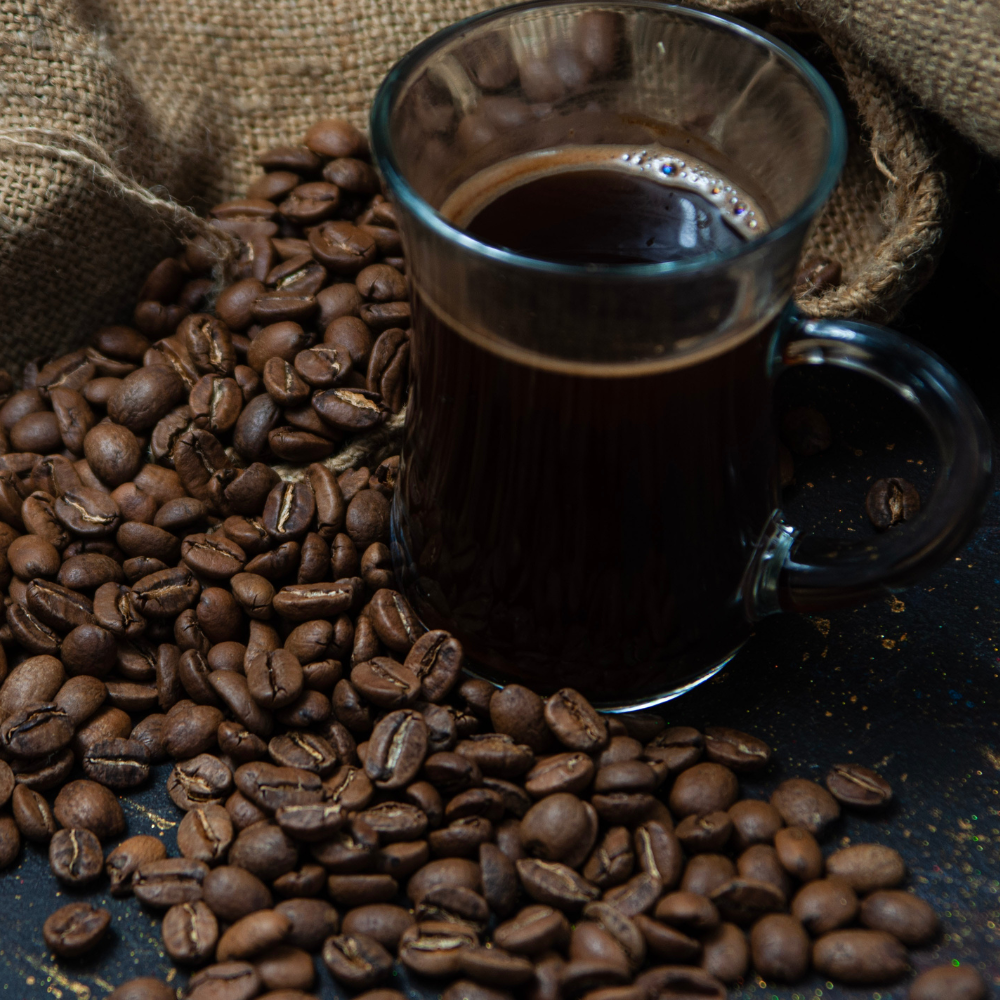
Finding the right coffee or espresso drink to suit your preferences and caffeine needs can be a daunting task. However, with a little guidance and experimentation, you can discover your perfect caffeine fix. Consider factors such as your caffeine tolerance, personal taste preferences, and the time of day when choosing your beverage.
In the following subsections, we’ll offer some advice to aid your decision-making when faced with the espresso versus coffee conundrum. We’ll start by recognizing your caffeine tolerance and modulating your consumption as per that.
Know Your Tolerance
Individual caffeine tolerance refers to the amount of caffeine one can ingest without experiencing adverse side effects. Comprehending your individual caffeine tolerance is essential for making educated decisions while choosing your favorite coffee or espresso beverage. Be mindful of any side effects such as jitteriness, headaches, or difficulty sleeping, and adjust your caffeine consumption accordingly.
If you aim to cut down on your caffeine intake, try consuming lesser amounts of caffeine more often, avoiding caffeine later in the day, and choosing decaffeinated coffee or tea. Alternative methods of decreasing your caffeine consumption may include consuming herbal teas, water, and edibles containing natural sources of caffeine, such as dark chocolate.
Experiment with Different Beans and Roasts
Experiment with various beans and roasts to find a balance between flavor and caffeine that suits your taste buds. Start with a light roast and progress to a darker roast, allowing you to appreciate the full range of flavors and aromas each bean exhibits. Also, pay attention to the origin of the beans, as distinct regions produce beans with unique qualities. Don’t forget to try regular coffee as well, as it can offer a familiar and comforting taste.
Experimenting with different brewing methods can also help you uncover the ideal pairing of beans and roasts that suits your taste preferences. By trying various beans, roasts, and brewing techniques, you can develop a more profound understanding of the coffee roasting process and discover the perfect combination tailored to your preferences.
Summary
In this espresso and coffee caffeine showdown, we have explored the brewing processes, the impact of coffee beans and roasts, and the magic of espresso machines on flavor, preparation, and caffeine content. With this newfound knowledge, you are now better equipped to navigate the world of coffee and espresso, making informed decisions based on personal preferences and caffeine needs.
Frequently Asked Questions
Is espresso stronger in caffeine than coffee?
a: Ounce for ounce, espresso has more caffeine than regular coffee - an average one-ounce shot of espresso contains 64 milligrams of caffeine, whereas an average eight-ounce cup of brewed coffee contains 96 milligrams.
This means that espresso is a more concentrated form of caffeine, and can provide a more intense energy boost than regular coffee.
How many espresso shots equal a cup of coffee caffeine?
a: A single shot of espresso contains approximately the same amount of caffeine as one 6 ounce cup of brewed coffee, so approximately one and a half shots would equal a cup of coffee in terms of caffeine content.
How much caffeine is in Starbucks espresso?
a: A single shot of Starbucks espresso contains 75 milligrams of caffeine, and an 8-ounce cup of Starbucks’ Pike Place medium roast coffee contains 155 milligrams.
This amount is just slightly over the U.S. Food and Drug Administration’s recommended daily limit of 400 milligrams.
Which coffee has more caffeine?
a: Robusta beans have a higher caffeine content than Arabica coffee beans, offering nearly twice as much caffeine per bean.
If you’re a caffeine junkie, Robusta may be the ideal option for a stronger cup of coffee.
How does the brewing process affect caffeine content in espresso and coffee?
a: The brewing process significantly affects the caffeine content of espresso and coffee; espresso extraction uses high pressure, which produces a more concentrated brew (and thus higher caffiene level, ounce for ounce), while drip coffee uses an extended extraction period.
As you continue to explore the vast world of coffee and espresso, remember to consider your caffeine tolerance, experiment with different beans and roasts, and savor each sip of your caffeinated journey. With a little trial and error, you’ll find your perfect caffeine fix, whether it’s a bold espresso or a leisurely cup of drip coffee.
Enjoy!
